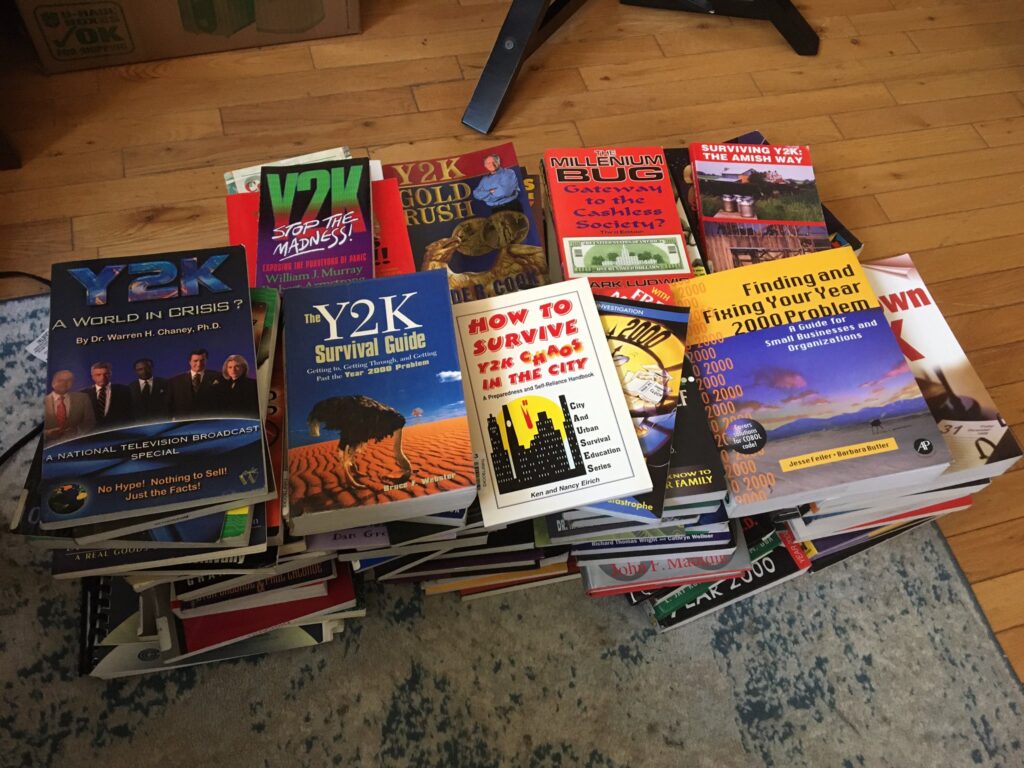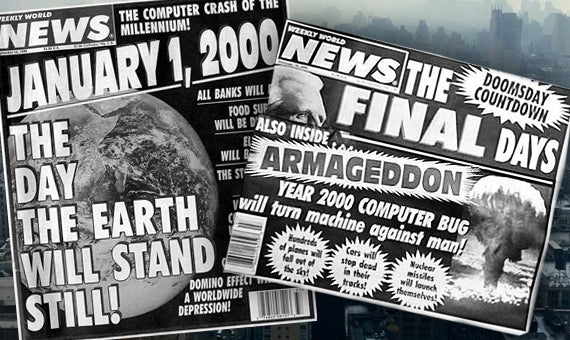
How your tax dollars and fear are used by Appointed Leaders and Elected Politicians to manipulate their information and your reality.
By Jason Spiess, ESG University
Who remembers Y2K? What do you remember about the global two-digit computer issue? Let’s take a minute and see how Y2K is vetted through this ESG Exercise.
Here is a Time Magazine recap of the event:
For months before the stroke of midnight on Jan. 1, 2000, analysts speculated that entire computer networks would crash, causing widespread dysfunction for a global population that had become irreversibly dependent on computers to hold, disseminate and analyze its most vital pieces of information. The problem was that many computers had been programmed to record dates using only the last two digits of every year, meaning that the year 2000 would register as the year 1900, totally screwing with the collective computerized mind.
Now some thoughts and predictions from the media and experts. Here’s one that sums up most of the hysteria.
Michael Hyatt, the author of The Y2K Personal Survival Guide, said he was assuming at least a 12-month disruption of basic goods and services including no electrical power, no clean water, no telecommunications, shortages of food, gas, clothing and retail goods, bank failures, inaccessibility of funds, stock market crash, dramatic drop in real estate prices.
“Things are going to get more confusing… The point of absolute certainty will never come… Nevertheless, I am assuming at least a 12-month disruption of basic goods and services.” – Michael Hyatt, The Y2K Personal Survival Guide 1999
And that Y2K prediction was actually one of the milder predictions.
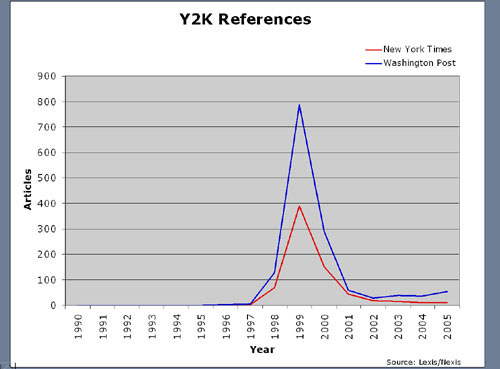
The media picked up on these predictions and speculations like it was real news.
Two articles a day in The Washington Post in 1999 for quite a few months, and then it collapsed to almost nothing. This later drift upward is for two reasons actually. First, there’s a band called Y2K, and second, there’s a steady stream of self-congratulatory articles in which the elected politicians and appointed leaders take credit for leading the professionals through the dreaded crisis of the time.
This is the behavioral pattern and template used often. New fears suddenly rising out of nowhere and the politicians are the leaders in charge of your livelihood and future.
For close to a year, trusted news networks, authors and journalists inundated the public with fears of economic depression, unemployment, civil unrest, including protests, riots and general lawlessness.
Many others simply pointed to a meltdown of all civilization. And the media was all-in too.
This graph shows which sector spent what during Y2K. As you can see the governments didn’t really have anything to do with it, rather, it was the private sector who worked tirelessly to fix the problem while the government and their cozy access with the media told the world they were the ones who fixed it.
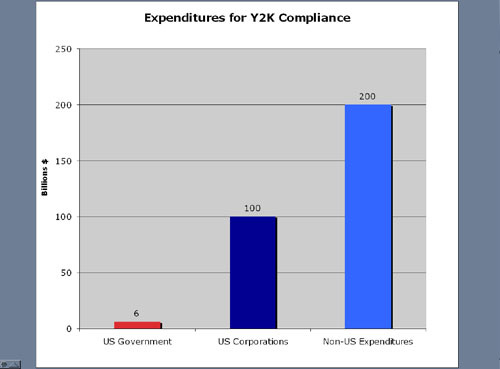
The United States government on Y2K spent $6 billion. Citibank alone spent nearly $1 billion, and total U.S. expenditures were in the region of $100 billion, which means the government spent six percent of the total. Globally there were $200 billion in expenditures.
From Time Magazine:
“Industries and companies don’t spend $100 billion dollars or devote these personnel resources to a problem they think is not serious,” John Koskinen says, looking back two decades later. “…[T]he people who knew best were the ones who were working the hardest and spending the most.”
Elected politicians and appointed leaders bombard our daily lives with fears and issues beyond our imagination. Exaggerated language and abuse of inherited trust were amplified during Y2K. As if they were the only answer to the digital doomsday. As if they were the ones who actually saved the planet from “airplanes dropping out of the sky”.
Would Citibank have spent the money to fix its Y2K problem without government urging? Of course they would have. Because if they didn’t fix the problem, they would have gone out of business, and the same with other banks and businesses around the world. Yet, the government and their appointed leaders took the credit. And the media complied.
A trusted leader working with a trusted news outlet. What’s the ESG Score on this type of abuse of power? Many of the elected officials and appointed leaders have become very cavalier with how they spend and use other people’s time and money.
This is a another common and antiquated behavior or tactic the government and their “preferred media partners” use on the tax payer everyday.
That is, to encourage what is happening already and take over the cause. This too is a very common strategy in many areas of advocacy for elected politicians and appointed leaders.
Incidentally, China actually declared “war” on the Y2K glitches, and promised to hold organizations “criminally responsible” if they allowed any millennium-related mistakes to happen on Jan. 1.
We have a modern example of the call to action by elected politicians, appointed leaders and activists to end our use of fossil fuels and move to a carbon-neutral-or-free lifestyle.
However, their “call” was already happening.
According to Jesse Ausubel of the Rockefeller Institute, the industrialized nations have been decarbonizing their energy sources for 150 years, meaning that we are moving away from carbon toward hydrogen. In other words, the ratio of carbon to hydrogen decreases as you go from wood and hay, which is one to one, to coal, to oil, and finally to natural gas, where it’s one to four.
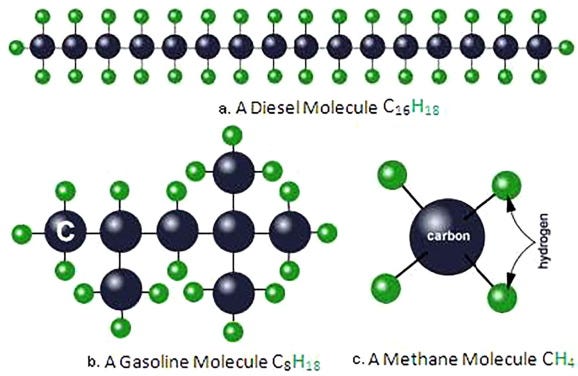
Ausubel expected that this trend would continue through this century as we move toward what he imagines as a pure hydrogen energy system, that is without the assistance of lawyers, regulators and activists.
In our next case study of how the media and politicians manipulate the information to work in their benefit we look at Chernobyl.
The Chernobyl disaster (also called the Chornobyl disaster) was a nuclear accident that occurred on April 26, 1986 at the No. 4 reactor in the Chernobyl Nuclear Power Plant, near the city of Pripyat in the north of the Ukrainian SSR in the Soviet Union. It is one of only two nuclear energy accidents rated at seven—the maximum severity—on the International Nuclear Event Scale, the other being the 2011 Fukushima nuclear disaster in Japan.
Below in the graph were the reported low estimates of immediate Chernobyl deaths as a consequence of the actual incident. As you see, the UPI in 1986, at the time of the disaster, predicted that there would be 2,000 immediate deaths. The New York Post thought there would be 16,000. The Canadian Broadcasting Company in ’91 thought there would be that many, and you see the BBC and The New York Times in 2002 predicting at the low end 15,000 deaths. Their estimates were 15,000 to 30,000 deaths.
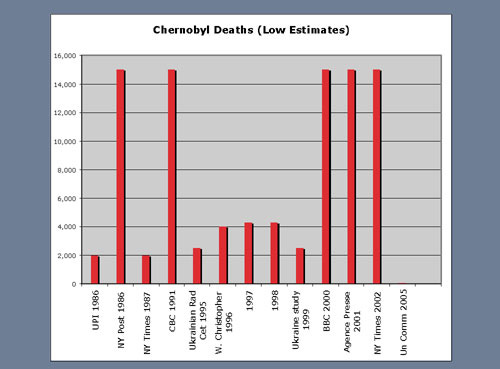
There was a United Nations commission in 2000 that suggested that the catastrophe was nowhere near that proportion and during the next UN commission in 2005 they revised the total number to 56.
Now, to report that 15,000 to 30,000 people are dead when the actual number is 56 represents a very large error.
Chernobyl was a tragic event, but in reality it became nothing remotely close to the global catastrophe that the media and experts were predicting. In the end only around 50 people died in Chernobyl, which is roughly the number of people who die every year in selfie accidents.
What is the ESG Score on that level of misinformation? It seems very difficult for an expert or professional to make an error of that scale and magnitude.
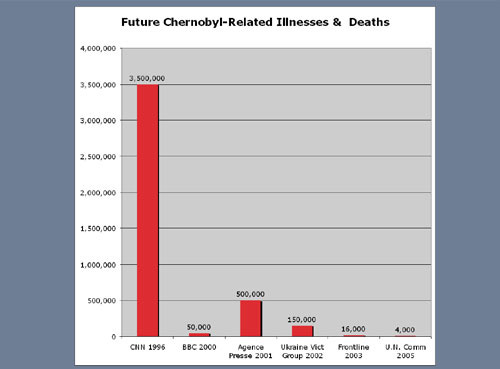
How about long-term consequences of radiation? The media reports were even less accurate and more sensational. In 1986, CNN was predicting future Chernobyl-related illnesses and deaths would engulf much of life spanning across Sweden, the Baltic and across the Black Sea. CNN estimated three and a half million.
The BBC, much more conservatively, estimated 50,000. Agence Press thought half a million. The Ukrainian Victim’s Group in 2002 estimated 150,000. The UN commission in 2005 decided that there would be about 4,000. That’s close to the number of Americans who die of everyday from traffic accidents. This is a huge error, unprofessional and outright dangerous to give this level of misinformation to trusting individuals looking for accurate information.
But what might be the most troubling of all, according to the UN report, was that the largest public health problem created by the accident was the damaging psychological impact due to a lack of accurate information.
All the fear and misinformation began manifesting into negative self-assessments of their own health and had a belief in a shortened life expectancy. In other words, the greatest damage inflicted on the people of Chernobyl was caused by bad information.
ESG demands strict controls on radiation, energy emissions and fossil fuels because it’s such a “health hazard”, but clearly Chernobyl demonstrates that false information can be as damaging if not more.
Thousands of Ukrainians who didn’t die were frozen in fear. They were authoritatively told to be afraid. They were told by their leaders and media they were going to die when they weren’t. They were told by appointed leaders that their children would be deformed when they weren’t. They were even told they couldn’t have children when they could.
What is the ESG Scoring System for those who used their highly-paid position of power to authoritatively promise a future of cancer, deformities, pain and decay?
In closing, we look to Mark Twain who famously said, “I’ve seen a heap of trouble in my life, and most of it never came to pass”.
Article originally appeared at ESG University
About The Crude Life
Award winning interviewer and broadcast journalist Jason Spiess and Content Correspondents engage with the industry’s best thinkers, writers, politicians, business leaders, scientists, entertainers, community leaders, cafe owners and other newsmakers in one-on-one interviews and round table discussions.
The Crude Life has been broadcasting on radio stations since 2012 and posts all updates and interviews on The Crude Life Social Media Network.
The Crude Life is non-political with a focus on the people, lifestyles, culture and innovations surrounding energy extraction and development. Content Producers are trained or educated in journalism, media or content creative studies.
Everyday your story is being told by someone. Who is telling your story? Who are you telling your story to?
#thecrudelife promotes a culture of inclusion and respect through interviews, content creation, live events and partnerships that educate, enrich, and empower people to create a positive social environment for all, regardless of age, race, religion, sexual orientation, or physical or intellectual ability.
Sponsors, Music and Other Show Notes

Studio Sponsor: The Industrial Forest
The Industrial Forest is a network of environmentally minded and socially conscious businesses that are using industrial innovations to build a network of sustainable forests across the United States.
Weekly Sponsor: Stephen Heins, The Practical Environmentalist
Historically, Heins has been a writer on subjects ranging from broadband and the US electricity grid, to environmental, energy and regulatory topics.
Heins is also a vocal advocate of the Internet of Everything, free trade, and global issues affecting the third of our planet that still lives in abject poverty.
Heins is troubled by the Carbon Tax, Cap & Trade, Carbon Offsets and Carbon Credits, because he questions their efficacy in solving the climate problem, are too gamable by rent seekers, and are fraught with unreliable accounting.
Heins worries that climate and other environmental reporting in the US and Europe has become too politicized, ignores the essential role carbon-based energy continues to play in the lives of billions, demonizes the promise and practicality of Nuclear Energy and cheerleads for renewable energy sources that cannot solve the real world problems of scarcity and poverty.

Weekly Sponsor: Great American Mining Co
Great American Mining monetizes wasted, stranded and undervalued gas throughout the oil and gas industry by using it as a power generation source for bitcoin mining. They bring the market and our expertise to the molecule. Our solutions make producers more efficient and profitable while helping to reduce flaring and venting throughout the oil and gas value chain.
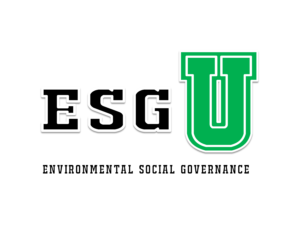
Learn. Laugh. Liberate and Linger around ESG University! ESG stands for Environmental Social Governance and it’s what’s driving business and politics today.

Studio Email and Inbox Sponsor: To Be Announced

Featured Music: Alma Cook
For guest, band or show topic requests, email studio@thecrudelife.com
Spread the word. Support the industry. Share the energy.

